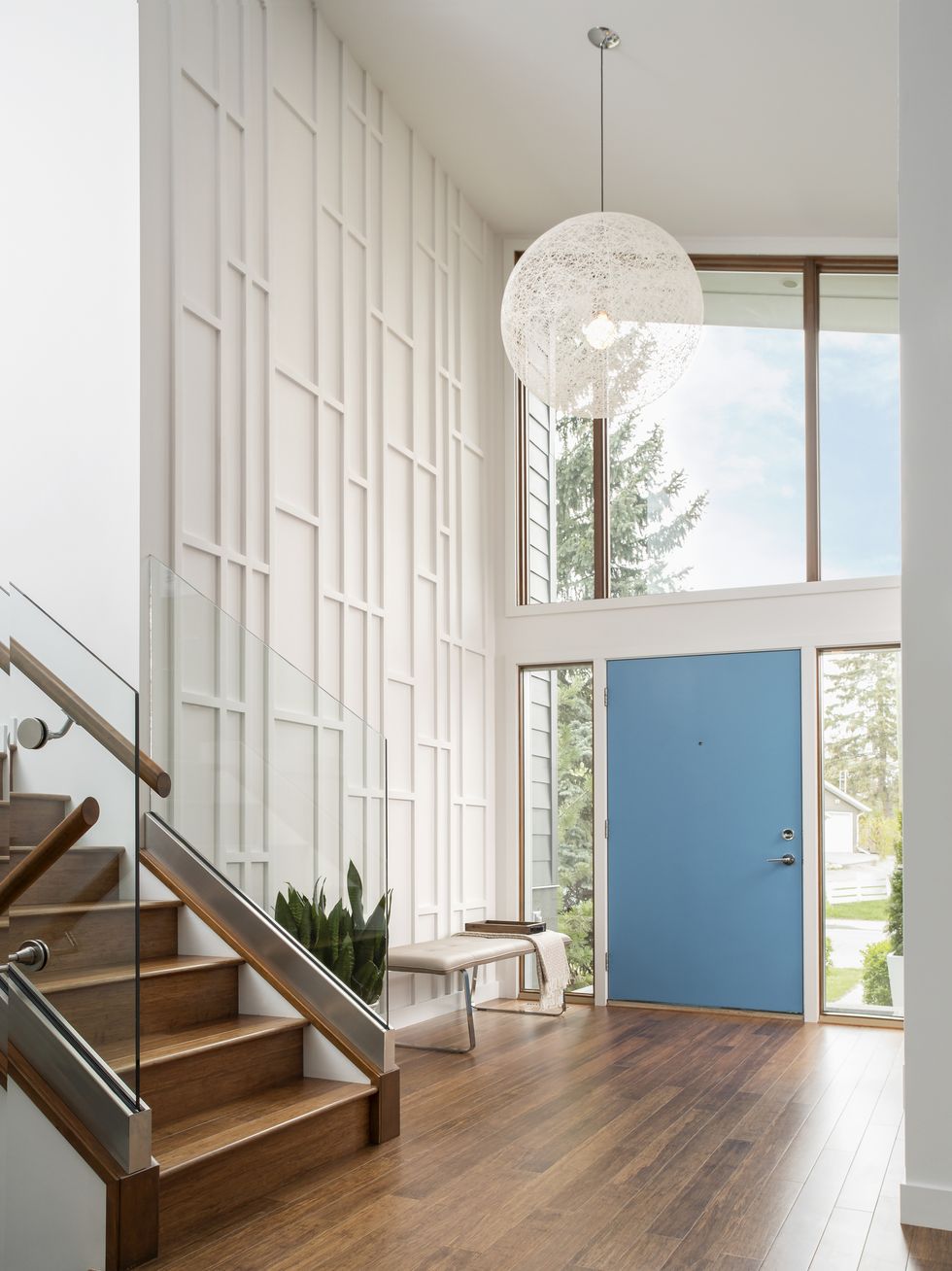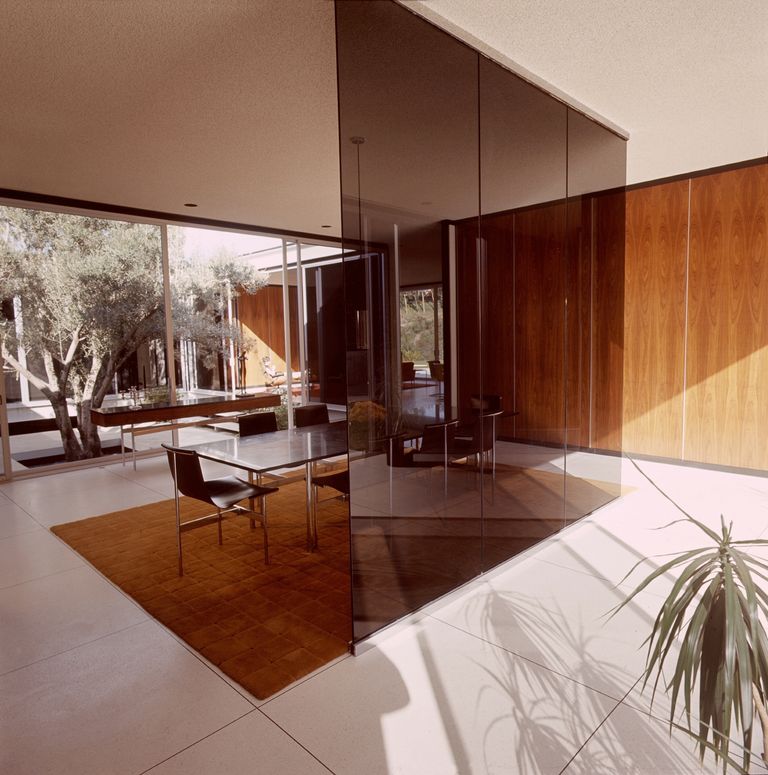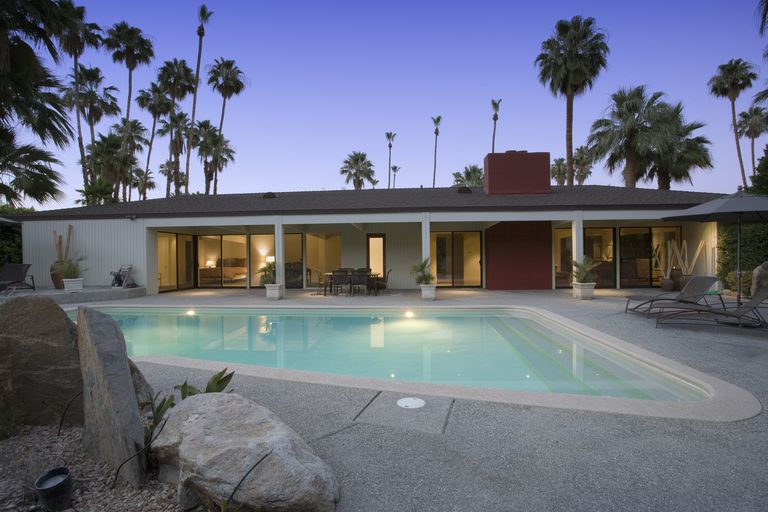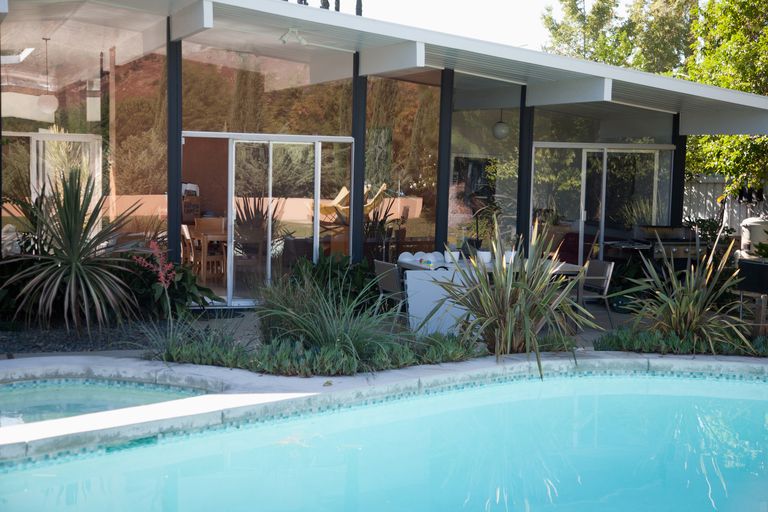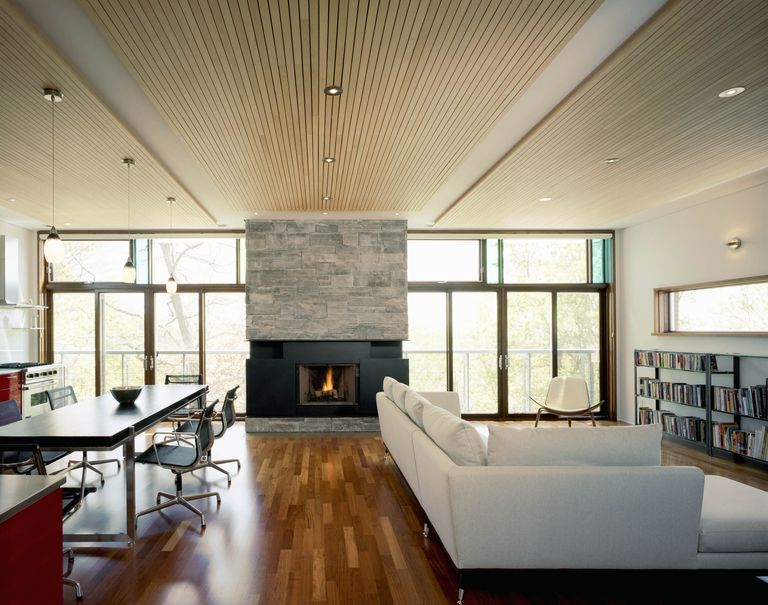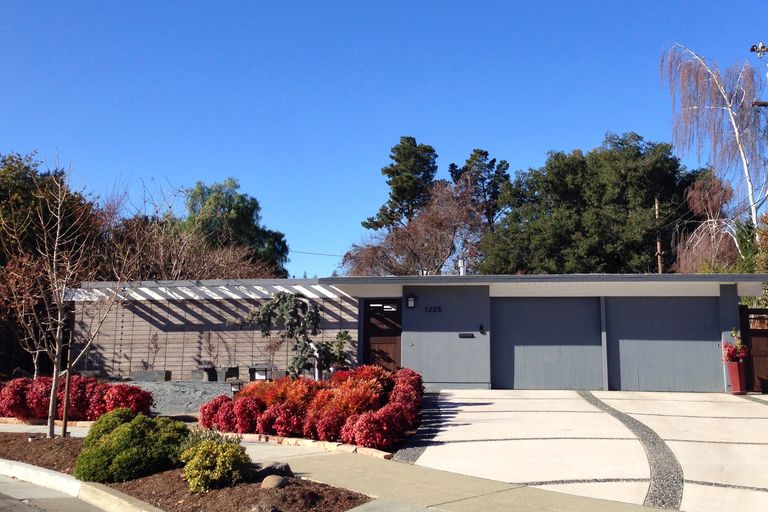
Why Millennials Love Mid-Century Modern Homes So Much
The Mad Men-era architecture style is as popular now as it was when it was brand new.
Mid-Century Modern design gets name-dropped a lot these days and can be seen everywhere from the Museum of Modern Art to the Target catalog. As any celebrity knows, the more popular and well-known you are, the more likely there will be inaccurate things said about you. For Mid-Century Modern design, it’s that “mid-century” part that often is ignored, since it’s easy to assume all “modern” design falls into one bucket, which simply isn’t true. When it comes to Mid-Century Modern architecture, it’s referring to the wave of new homes built in this style (more on what that style actually is, below) between the end of World War II (1945) and the mid-1970s.
One of the prevailing themes of Mid-Century Modern architecture is a nearly equal emphasis on function and form. The style itself originated—and came to be extremely popular—for both practical and aesthetic reasons. The practical: After World War II ended, returning soldiers required housing. As a result, large residential developments in the suburbs filled up with homes that were relatively quick and cheap to build. While some of these developments, especially those on the east coast, featured more traditional style homes like Cape Cods, California and a few other parts of the country saw a boom in more modernist homes that would come to be called Mid-Century Modern.
“One of the central ideas of these production homes was to build them in a modular fashion in order to simplify construction and keep the costs low,” explains John Klopf, a San Francisco-based architect who specializes in Mid-Century Modern homes. “Builders needed a cost-effective construction type in order to provide better amenities and an architect-design production home to their customers at a competitive price.”
This style of home wasn’t the cheapest and quickest house you could build, though. The design elements were equally important, and a fairly stark contrast from the popular Colonial Revival movement that preceded it. Instead of looking to the past, the country was in a period of transition that had everyone looking to the future.
“What makes this a unique style is the amassing of various elements under a rubric of efficiently constructing modern, designed homes so that middle-class families could live in a work of art,” John says.
So What Exactly Makes a Home Mid-Century Modern?
There is some variety among Mid-Century Modern homes, but generally, they are one-story homes with an open-concept layout, lots of windows primarily on the sides and back of the house, with a unique embrace of the outdoors. Since the majority of these homes were built in California (famed developer Joseph Eichler built more than 11,000 Mid-Century Modern homes in the state alone), encouraging indoor-outdoor living made sense.
Large expanses of glass were “used to break down the interior spaces from the exterior spaces,” John explains. The overhanging eaves of low-pitched roofs appear to be a continuation of interior ceilings, further blending the inside with the outside. (Are you picking up on a theme yet?) Architects also incorporated more natural materials in interior spaces, like exposed beams, wood-paneled walls, concrete, and other stone features. They also literally brought the outdoors in by incorporating interior courtyards and atriums with glass walls.
While the innovative style of these homes innately made a statement, these weren’t grand structures meant to show off the owner’s wealth. As John puts it: “the use of wood and other simple, natural materials, combined with the understated street facades and humane scale of the homes works to set them up as places for people to inhabit and enjoy nature instead of as iconic ‘things’ to be looked at from the street.”
Why Are People Obsessed With Mid-Century Modern Homes Now?
As John sees it, the number of Mid-Century Modern homes being built tapered out in the ‘70s because people simply lost interest. “They were just another home” for the next 20 years or so, he says. But as early as the 1990s, interest in the homes began to pick back up. John guesses that people who had grown up in or around Mid-Century Modern homes were reaching adulthood and buying more of the homes because they associated some nostalgia with them.
And if ‘60s- and ‘70s-era kids saw these homes as part of their childhood, then ‘80s- and ‘90s-era kids (ahem, Millennials) see them as historic, unique, and cool as they’ve reached home-ownership age in the past 10 to 15 years. Enter a little TV show called Mad Men, and a full-blown resurgence of everything Mid-Century Modern has erupted. “The younger generation could only experience the rise of jazz and modern art, the dawn of the TV era, the Kennedy years, and everything else ’60s as history,” John says, adding to the allure of an architectural style that’s so strongly associated with the era it originated in.
John has a lot of experience with the demand for this style of home since his firm is one of the country’s leading architecture teams specializing in Mid-Century Modern homes—for both remodels and new construction. He says there is nationwide interest in building new homes in the Mid-Century Modern style, but where there are a lot of original homes—again, mostly in California—there is still a high demand for updating, modernizing, and expanding those homes. But as they’ve become more popular again, the demand is higher and costs have risen. And not to mention, as each year passes, more problems pop up in these older homes, which are expensive to fix, further increasing the demand for new builds.
Looking to buy a new home or sell your current home, we can help. Call the Betty Most Agency today to get started (715) 821-9486.
#bettymost #bettymostagency #realestateagent #architecture #moderndesign #franklloydwright #millennials
Article courtesy of House Beautiful, By Maggie Burch

